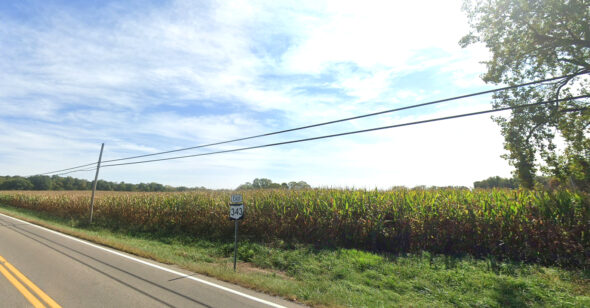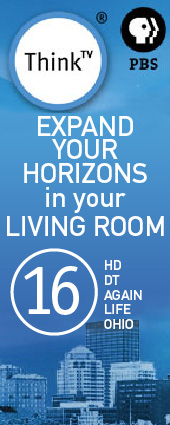
(Photo: Google Maps)
Zoning changes ahead for Miami Township
- Published: November 20, 2025
Miami Township is in the midst of its most extensive rewrite of local land-use rules in decades.
The work, led by the Miami Township Zoning Commission and Zoning Administrator Bryan Lucas, is aimed at clarifying and modernizing the Township’s Zoning Resolution, the document that governs how property can be used in unincorporated areas.
The Zoning Resolution lays out ground rules and framework for zoning in Miami Township’s unincorporated areas — everything from where a house or shed can go on a lot to which uses of a structure or property are permissible.
The resolution is overseen by the Zoning Commission; that body’s purpose is to keep the resolution in line with state law and recommend changes to the text to Township trustees. When a rule in the resolution doesn’t fit a property owner’s circumstances, the Township’s Board of Zoning Appeals, or BZA, can hear requests for variances or conditional uses.
For residents, understanding the Zoning Resolution is often the difference between a permitted use of their land and having to request a hearing. Until recently, though, Lucas said the rulebook was difficult to parse.
Lucas joined the Township as zoning administrator in October 2024, and within weeks saw issues, as he often couldn’t quickly locate answers to basic zoning questions. Sections of the Zoning Resolution overlapped or contradicted one another, and formatting was inconsistent.
“If the zoning administrator couldn’t find the answer,” Lucas said, “how do I expect a resident to find the answer?”
Between 2000 and 2017, the resolution saw only one update — the addition of a wellfield protective overlay. From 2017 to 2024, just three additional changes were made, focused on planned unit developments and the removal of R-2 and R-3 zoning districts — which allow for medium-density, single-family housing and multifamily dwellings, respectively — from the resolution. The resolution, Lucas said, hasn’t kept up with state law, housing needs or new land-use questions.
One of the Zoning Commission’s early steps in updating the Zoning Resolution was reorganizing the entire document. That reformatting, adopted by the trustees in April, aligned Miami Township with the structure used in other Greene County jurisdictions. Updating language and layout, Lucas said, made the resolution easier to navigate and brought scattered sections into a single framework.
“The key to a good resolution is that it’s cohesive, so it looks like it was written all at one time,” he said.
Since then, the Zoning Commission has completed drafts of several text amendments, most of them clarifying long-standing land-use topics; those amendments have been covered in past issues of the News. The new language gives clearer guidance — for example, fences should not be placed in roadway rights-of-way, and accessory buildings must be set a minimum distance apart to meet county fire-safety expectations. Lucas said these early amendments were intended to be low-impact and largely uncontroversial.
“We’re getting caught up from decades of not addressing certain things,” he said.
More changes are coming: The Township received an Ohio Housing and Technical Assistance Grant, applied for through the Greene County Regional Planning and Coordinating Commission, or RPCC, which is supporting the rewrite process. Over the grant period, which extends into next year, the Zoning Commission expects to draft 17 additional text amendments. Eight are already in draft form, and include revisions related to building features that extend into yards; parking of RVs, trailers and mobile homes; swimming pools; cemeteries; private airstrips; and updated articles on off-street parking, administrative bodies and administrative procedures.
Nine more draft updates will be taken up between November 2025 and January 2026. Some of those topics, Lucas said, are likely to attract attention. They include definitions, districts and boundaries, signage, home occupations, bed and breakfast operations, temporary structures and uses, short-term rentals and accessory dwelling units. Each amendment will be discussed first at the Zoning Commission, and then in a public hearing before the Township Trustees.
Coming up in December, the Zoning Commission will revisit the Township’s zoning map to ensure that zoning districts in the township correspond to how those areas are actually being used. Lucas pointed to Glen Helen Nature Preserve which has properties that fall within the township’s unincorporated areas that he said would likely be better served within a district zoned for conservation/recreation; currently, those areas are zoned for agricultural use.
“Historically, we made everything agricultural, because it generally was, and even when we built some houses and made residential areas, we didn’t change it,” he said. “Conservation is the true goal of [the Glen’s] property … but they’re in an agricultural district, which does allow single-family homes. So it’s important to redistrict properly.”
Though the Zoning Commission will discuss and establish new zoning districts in the next few months, Lucas said it will likely be another year before any rezoning is enacted.
He added that the Township is planning an open-house-style meeting in January, to be run with Greene County RPCC staff, giving residents an opportunity to ask questions ahead of formal hearings.
The goal behind the new slate of amendments, Lucas said, is to create a resolution that is not only clear, but legally defensible. Just as importantly, he said, the document should reflect how residents actually use their land — and allow flexibility where appropriate.
“A lot of times, zoning is gray, so you try to make it as black and white as possible,” Lucas said. “I believe that people should be allowed to do what they want with their property, as long as it doesn’t affect the neighbors in an adverse way. The first thing I tell people isn’t ‘No,’ it’s, ‘Let’s see if we can do that.’ And that’s what a zoning person should do.”
Lucas added that work on the Zoning Resolution may continue after the grant period ends. For now, he said he hopes residents will take advantage of early transparency. Draft amendments already under review are posted at miamitownship.net under the zoning page, alongside meeting dates and application forms. The door is open — “People can voice their concerns at any time,” he said.
And those who are interested in being part of the zoning process in the Township are encouraged to get in touch with Lucas at blucas@miamitownship.net, as alternates for both Zoning Commission and the Board of Zoning Appeals are needed.
The Yellow Springs News encourages respectful discussion of this article.
You must login to post a comment.
Don't have a login? Register for a free YSNews.com account.















No comments yet for this article.